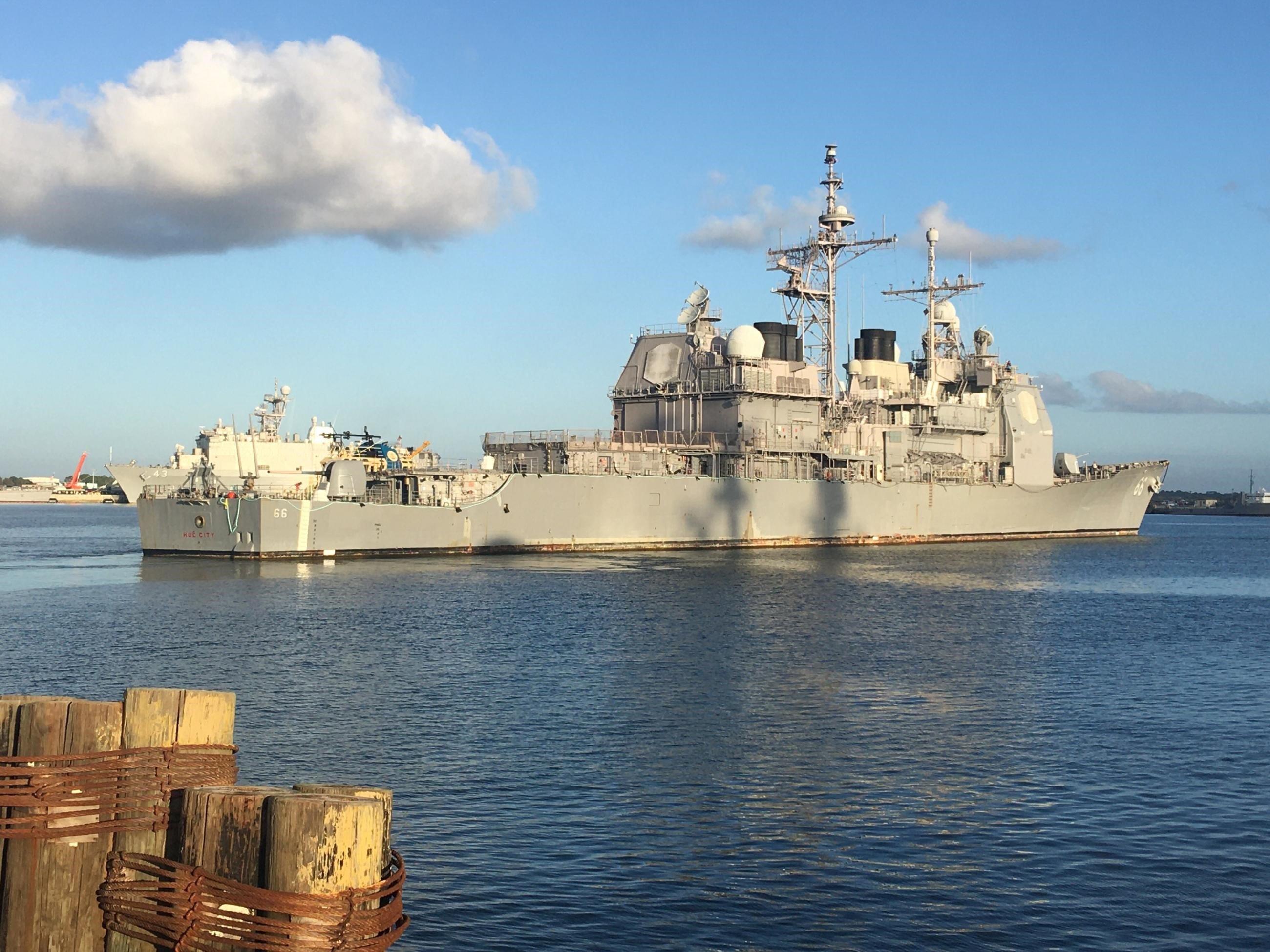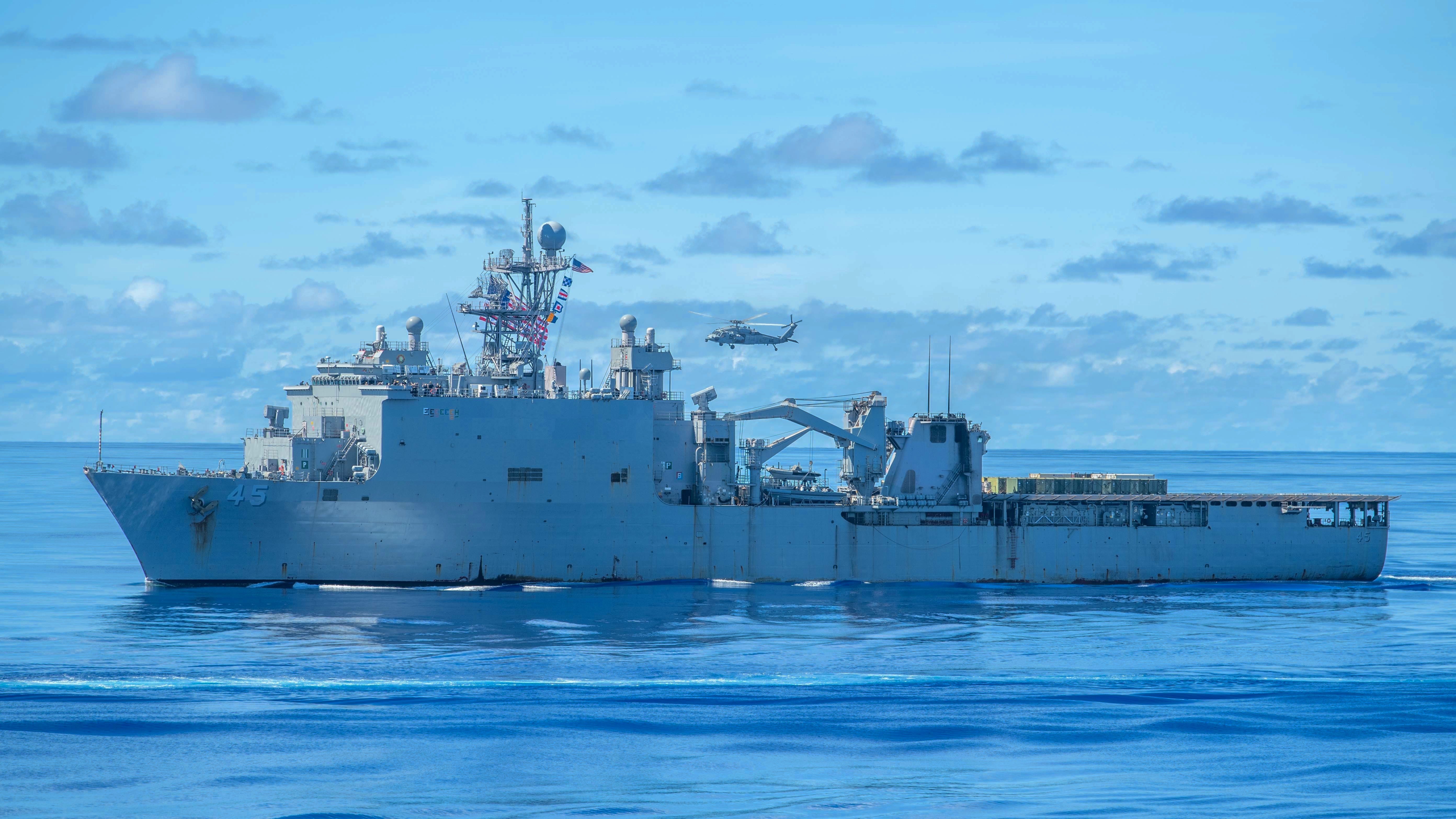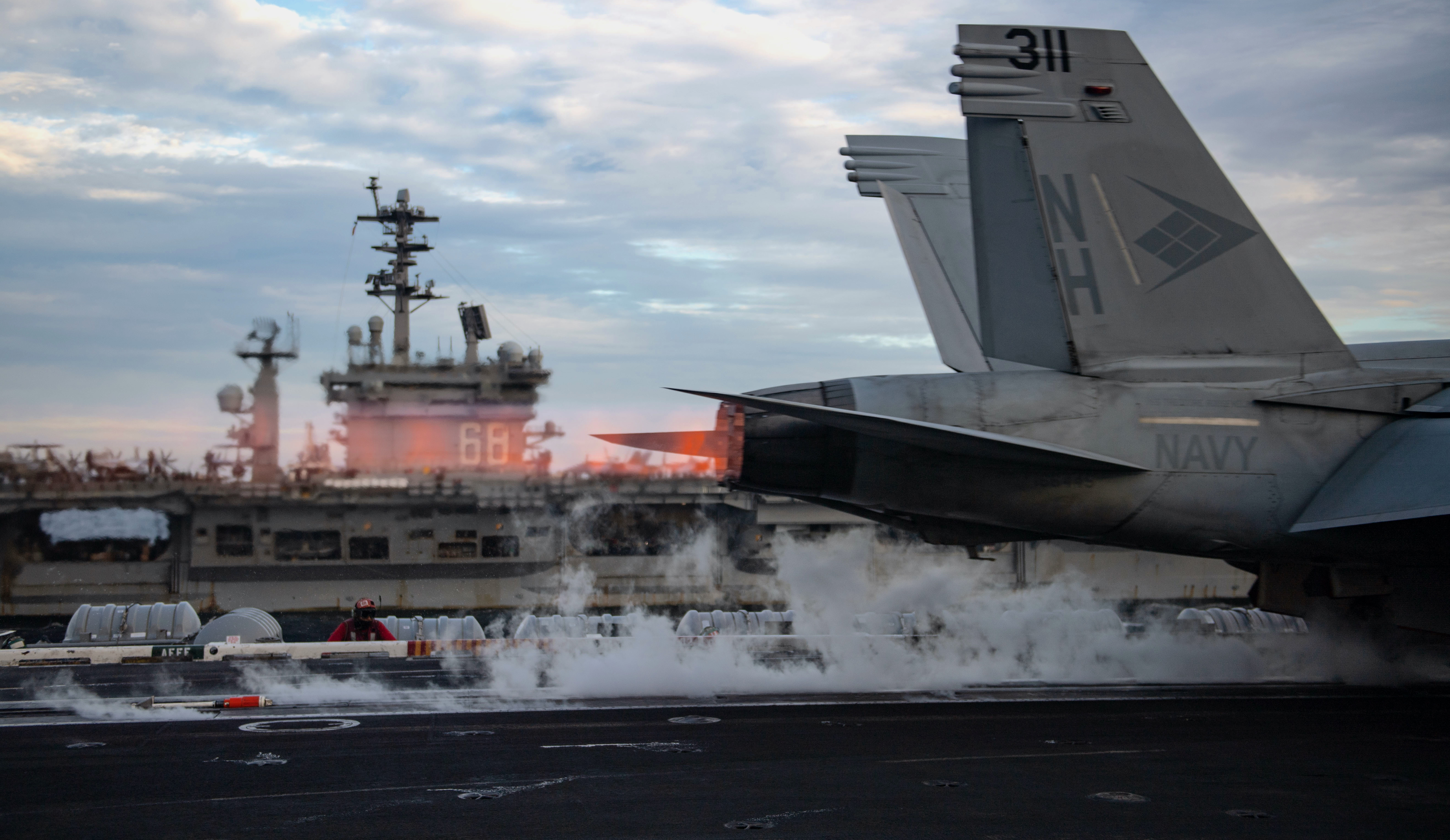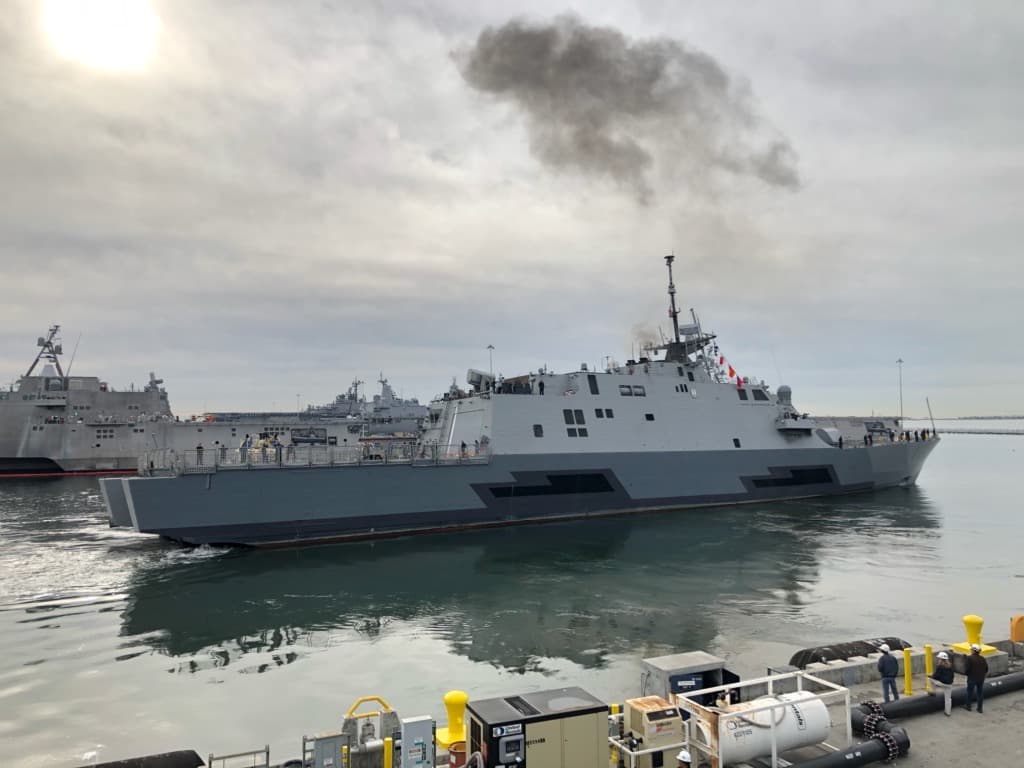
This post has been updated to clarify that Rep. Rob Wittman would like to see a defense budget of $757 billion, which equals the Fiscal Year 2021 enacted budget plus inflation. In his spoken remarks, he mistakenly said $753 billion.
The Navy is facing pressure to find savings within its own budget to pay for investments in future technologies like unmanned vehicles and hypersonic and directed energy weapons – but those savings shouldn’t come from the early decommissioning of cruisers and amphibious ships, a key lawmaker said today.
Rep. Rob Wittman (R-Va.), the top Republican on the House Armed Services seapower and projection forces subcommittee, said that Congress needs to do its part in finding enough money for a sufficient defense top line – at the very least, last year’s budget plus inflation, or about $757 billion, which is more than the $715 billion the Biden administration has proposed. But the Navy needs to do its part in ensuring it’s spending wisely without taking drastic measures like retiring ships and creating a short-term readiness problem to solve a long-term modernization problem.
“Our service branches have to come to the table and say, these are places where we can save money. These are places where we can avoid duplication. And listen, as the Navy’s looking at reducing force structure, they’re looking at some things that I think we ought to question: the number of cruisers that they want to reduce, the number of missile tubes associated with those cruisers. The LSDs that they want to reduce. If they reduce the number of cruisers that they propose, we’re going to lose 1,200 missile tubes. 1,200. The question is, how does that get replaced? And if you’re going to completely remove those and then say we’ll wait four or five years before we get the capacity back, that’s not acceptable. The same with the LSDs: if you reduce by the full number immediately that the Navy-Marine Corps is proposing, we lose 25 percent of our forcible entry capability. Unacceptable,” Wittman said in his opening remarks at the annual McAleese FY 2022 Defense Programs Conference.
“I’m not saying that we shouldn’t retire those systems. I’m saying we have to do it the right way. We have to make sure that we have a transition plan; say, ‘okay, as we lose these number of cruisers, we lose these number of missile tubes, how are we going to replace them?’ How are we not going to have a slope that goes, loss of capability, flat spot, and then an increase in capability; and what happens is, our adversaries look at that flat spot and they go, wow, there’s our opportunity. Instead, what we have to say is, ‘here’s our transition: how do we have, as we retire older systems and bring into place newer systems, how do we make sure that those lines converge very, very quickly?’”
HASC vice-chair and former Navy officer Rep. Elaine Luria (D-Va.) told USNI News recently that she would not support retiring the cruisers early because there were indications that China could decide to attack Taiwan within the decade and that the Navy had to be ready to fight China now if needed, rather than focusing all its efforts on being prepared to fight China in the 2045 timeframe.
Wittman acknowledged that balancing the current demand signal for operations and the readiness of the current force with investing in modernization for the future force would be an ongoing struggle, but he said the Navy has to find a way to self-fund some of its modernization by making cuts or reforms that don’t involve early ship retirements.
Asked where some opportunities may exist to find savings, he said the Navy needs to take a hard look at itself and figure that out quickly.

“All the service branches are going to have to find savings within their own budgets and be able to take those dollars and plow them back into modernization. That’s the way you’re going to be able to move the curve to the left of building new capability and to be able to properly transition in taking out the legacy systems,” he told USNI News during the question-and-answer session.
“They are going to have to do their job. Listen, Congress has to make sure that we provide that level funding, plus a factor of inflation; if we do anything less than that, then that erodes the capability to rebuild and modernize. But the service branches also need to go top to bottom and be really, really self-reflective on that, be self-critical, and say, ‘are these things we really need to do? Are these things that really add to the mission? Are these things that add capability? Are these things that we absolutely have to do?’ And then take those dollars and plow them back into the things that we see need to happen.”
James Geurts, who served as the Navy’s acquisition chief from 2017 until January and is currently performing the duties of undersecretary of the Navy, said at the same conference that the Navy acquisition community had been able to achieve significant savings without sacrificing quality just by being more efficient in contracting: over the last two years, he said, the Navy put 20 percent more money on contract with 20 to 25 percent fewer contract actions.
He also pointed to the Super Hornet readiness effort – to bring the F/A-18E-F Super Hornet fleet from a mission capable rate of about 55 percent up to 80 percent through business process changes, rather than just throwing more money at the problem – as an example of how the Navy was approaching efficiencies.
The Super Hornet effort “was a lot less about buying new things or buying more parts. The old answer used to be, well of course its spares, let’s buy more spares. When we really looked at it, it was, how long is it taking us to do phased maintenance, do we have the experience and the skillset balanced the right way, do we understand the real maintenance degraders and have targeted programs that go after those? And what we found was a ruthless application of resources to the levers that had the most throw allowed us to get a much more rapid change,” he said.

Geurts said he’s been working closely with Vice Chief of Naval Operations Adm. William Lescher on “the notion of, let’s get real, and then let’s get better. Bureaucracies love to solve a problem before they fully understand it and pull levers to show that they’re making activity, not necessarily always understanding did those levers actually change the needle. So we’ve been on a campaign of, let’s get real, let’s really understand where is our cost, where’s our spend. I think of dollars, people or time; fundamentally understand that so we can fix the things that matter the most that will move the needle the most and not confuse activity with outcome,” he said.
He talked broadly about attacking “fundamental costs” that don’t’ contribute to warfighting power, but he added that ultimately, at some point leadership in the Pentagon or the White House will need to weigh in on how much money the Navy will be allowed to spend to create how large a fleet.
“I’m right now focused on, how do we maximize the output we can generate for the resources we have, and before I go shoot on someone else’s target, I want to make sure we’re doing everything we can,” he said.
He warned against taking the effort too far, though, saying that becoming too efficient can make the force too brittle. The Navy has acknowledged that in recent years, as previous efforts to create an efficient fleet – having fewer but larger supply ships to bring fuel and goods to aggregated strike groups at sea, for example – made the fleet less flexible.
“There is a point where, if you are going to get additional outcomes, it’s going to be an investment,” he said, saying that efficiencies will only go so far without the military investing additional funds to grow the fleet.
“And then it’s a frank discussion of how much capability do you want and what’s it going to cost to generate that capability.”
Geurts would not comment specifically on the budget proposal or what it might recommend in terms of decommissioning cruisers, amphibious ships or Littoral Combat Ships, all of which the Navy has tried unsuccessfully to do in previous years.

He said the Navy is examining “what’s that right balance of keeping things while they’re still useful but not keeping things to the point where they’re not adding value to the missions we see going forward, and not falling in love with a product just because we have the product – it’s got to show that it can be lethal and add something to the fight.”
He said that, ultimately, the Navy wanted the best return on investment on the ships it bought, which could include finding new mission sets. For example, the service is kicking this idea around for the LCS program, which may not provide the high-end capability the Navy would want in a peer fight but could be useful in U.S. Southern Command or elsewhere.
Geurts noted that keeping a ship too long doesn’t just cost money to operate and maintain the ship, but also ties up manpower, training centers and more.
“The embedded cost of keeping a product too long can be debilitating,” he said, without specifically saying what he hoped would happen with the cruisers.
Overall, he reiterated, “my first priority is maximizing the return for every tax dollar the taxpayer gives me,” he said, adding that “what I’m dedicated to doing is ensuring I can, with confidence and credibility, say that we have maximized the dollars we’ve been given – and then it’s a decision, for the dollars you’re given in that output, is that enough? Or for the fight that you see going forward, do we have to change the balance? Again, I want to clean up my backyard before I talk about somebody else’s backyard, and that’s what we’re really focused on.”





